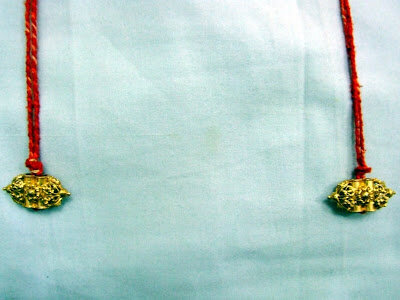The Narrative of Paradise Lost: The Kashmir Reconnects
Sharicka Zutshi
“Gul roy deshaan,
Bulbul krashan.
Dil sän gaäy dewānäy,
Chhakh jān jānānäy.
Chhui zulf tai khāl,
Āshkan kit zāl.
Ulfat āfati jānäy.
Chhakh jān jānānäy.”
Bulbul birds are tempted
Seeing your flower like vibrant face
Lovers lose their senses.
But you are my love.
Your tresses are a trap for your lovers.
Your affection and my love for you
threatens my life with its intensity,
You are my love.
- Rasool mir, A famous romance poet of Kashmir
Most people know of a region called “Kashmir” which has been a disputed territory between the two nations of India and Pakistan. The first reaction anyone has to me telling them I’m Kashmiri is “Oh! What do you think of the conflict?” That needs to change. The essence of Kashmir is not war. Its essence is not its land and borders. Kashmir’s essence is her serene rivers, flower beds, rich culture, and cuisine along with the unity of the people who have been through decades of political turmoil and turbulence. Today, I shall talk of the Kashmir that is built on foundations of love. Hence, Kashmiri should dictate its own narrative, not hatred and war. To do the same, I wish to compile my thoughts on Kashmiri culture and politics to represent it as The Narrative of Paradise Lost- Kashmir reconnects series.
I could never live in Kashmir but I grew up as an asal koshur koor (a real Kashmiri girl). My native tongue was not the first language I learnt, and, to this day, I speak it only in a broken manner. Most people are shocked to know that Kashmiri in itself is a language since the number of people who speak it around the world is exponentially decreasing. Kashmiri script was known as Sharada, but it is now dead. I hope to work with Kashmiri youth on reviving the script of our beautiful land.
I can obviously only touch upon so much, but I hope to introduce our language, clothing, and food.
The Sharada script
Speaking of beauty, many associate Kashmir with what they see in Indian cinema, especially clothing. Heavy jewelry and fancy coats are not the way to go in the lives of hard working Kashmiris.
Some people speculate that the Mughal Emperor Akbar invented the pheran— the Kashmiri wardrobe—to adjust Kashmiris to a “lazy lifestyle”- Not at all demanding and very comfortable such that they felt their new emperor was a good ruler. I see the reasoning behind this amusing story.
The pheran is a long, comfortable garment that is a staple in all Kashmiri households. It is a loose garment that is warm and comfortable against a harsh winter or a light chill. It can be comfort wear to just adjust your Kangri (a pot of hot coal to keep one warm)under your clothing, or it can also be a fashion statement or designer wear—the possibilities are endless.
Me in my grandmother’s pheran while the wind refuses to cooperate
Fashion in Kashmir is very practical, but it is also culturally relevant. For example, the Dejhoor—long, hanging earrings worn on upper ear piercings worn by Kashmiri Pandit women after marriage— are a sign of maturity and prosperity as a young lady steps into the next phase of her life.
Dejhoor worn by Kashmir Pandit women
The last aspect I believe I should touch upon is our food. Kashmiri cuisine is filled with vegan, vegetarian, and non-vegetarian food, composing a balanced diet. My favorite dish is and always will be Roganjosh, a spicy lamb stew that fits one’s taste buds in any climate. Chaaman (cottage cheese), Haak (something like kale), and Dum Aloo (potato stew) are other staples.
Well, maybe not so balanced since it is filled with oil and spices. We do not sacrifice flavor for health apparently! In the cold Kashmir winters, the oil must act as a heating agent—that’s the best explanation.
The best thing about all things Kashmiri is that, from our food to our clothing to our language and song, everything is interlaced with different cultures and lifestyles, reflecting the changing demographics, history, and rulers of Kashmir over the years.
The best way to end? Quoting a nursery rhyme. Every Kashmiri knows the song:
Hukus bukus teylli wann che kus
moh batta loudum degi,
shaal kich kich waangano,
Brahman zaaram puane chhokum,
Brahmish batanye tekhis tyakha.
Hukus Bukus is the grammatically incorrect version, as children sung it, of the actual lesson taught by teachers that states:
Who is that, who am I, then tell me who is he (referencing the almighty)
Each day I get more and more connected to the world
When I take the breath that leads me to complete purity,
Only then will I feel like my mind is saturated with love for the divine.
This poem was said to be written in Lal ded’s time, A Kashmiri saint and mystic poet who created the poetry style of the Vakhs or speech- much like spoken word. It was later converted to a children’s nursery rhyme. It defines spirituality and connections to the almighty as well as the philosophical knowledge that lasts in Kashmir to this day and is the foundation of the original Kashmiri education system.
Through writing about my experience I hope to bend the narrative about my home and restore it to its core—The paradise on earth established on reason and thought, not blind faith.




